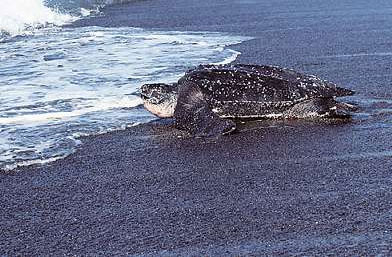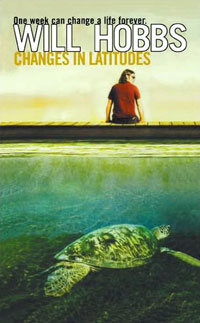 |
At the very beginning, I was looking at a beautiful photograph of sea turtles swimming underwater. My mind drifted, and I imagined swimming with sea turtles. I wrote a short story that contained that image, then set it aside. During the next few years we went on spring break to Mexico twice, once to Isla Mujeres, on the Yucatan peninsula and once to Puerto Vallarta, on the Pacific coast. At Isla Mujeres I came across a sea turtle in a three-sided pen at the beach, and encountered many sea turtle products for sale. Back home I read an expose of an outfit on the Pacific coast of Mexico that was slaughtering tens of thousands of ridley sea turtles every year while merely pretending to hatch their eggs. All of these things started to come together. I started imagining a novel that would intertwine the fates of endangered turtles with that of an “endangered family” on spring break in Mexico. From the first, was Travis the narrator? I could hear his voice from the first line I wrote. Changes in Latitudes really came together for me fast. Writing it was an intense and emotional experience. The heart of the book seems to be when Travis and Teddy, his little brother, swim with the sea turtles. It really is. You know, the idea of swimming with sea turtles is all that survived from my original short story. But it was plenty: I wrapped the whole novel around that image. It taught me that an image you have a strong feeling about is all that you need to get started. Starting with a single image, you could write a poem, a song, a short story, or an entire novel. Was Changes In Latitudes your title from the start? Yes to both questions! I really liked the title. It contains much more than the idea of going south for a vacation. Readers hearing the title can “fill in” the second phrase of that song. Travis's changes in attitudes is what this story is all about. Over the course of the novel, he moves from being self-absorbed to caring a whole lot more about his family and even about the endangered sea turtles that his little brother loves so much.
Have you been around sea turtles other than that one in the pen that ended up in the novel? The turtles in my story are ridleys, but Jean and I did have the opportunity to work for five days on a leatherback sea turtle project at a remote beach on the Pacific coast of Mexico. These leatherback turtles are really big—the largest one recorded was about 2,000 pounds! The females we were seeing averaged around 800 pounds. We were camping on the beach and assisting Mexican turtle biologists and Mexican students. After dark, the female leatherbacks started coming out of the sea to lay their eggs. As the females laid their 80 or so eggs, the students collected them so the poachers walking nearby in the dark wouldn't steal them and sell them. Note my photo, taken at first light, of one of the females going back into the sea. Shortly after dawn, we helped the students dig new nests in a fenced nursery. Sixty days later, the eggs would hatch. In fact, at the time we were there, there were lots of hatchlings clawing their way to the surface from earlier “plantings.” It was a big thrill to take them outside the fence and watch them disappear into the sea. In my novel, Travis said they look like wind-up toys. They really do. Is Punta Blanca modeled on a real place? Yes, Puerto Vallarta. But the ridley sea turtle beach and the slaughterhouse I was describing were far to the south, in the state of Oaxaca. The way to join them in close proximity was to fictionalize the resort city. I called it Punta Blanca. One last question. Have you ever had the chance to swim with sea turtles yourself? Yes! In Hawaii, and it was just as wonderful as I had imagined it would be. |
|

